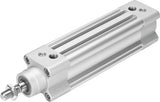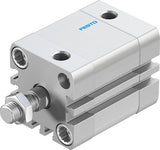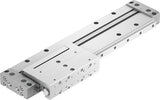ISO 15552 Pneumatic Cylinders
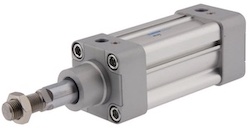
Figure 1: An ISO 15552 double-acting pneumatic cylinder
ISO 15552 pneumatic cylinders conform to established standards for their design and functionality, and they use compressed air to produce linear motion. These cylinders have a rectangular prism shape that remains consistent across different manufacturers, making them easily interchangeable and familiar to users.
This article covers the value of ISO standards, the advantages of using ISO 15552 pneumatic cylinders, and the characteristics of these pneumatic cylinders.
View our online selection of pneumatic cylinders!
The purpose of ISO standards
The International Organization for Standardization (ISO) provides a globally recognized framework for ensuring that products, services, and systems consistently meet the highest quality, safety, and performance levels. These standards, formulated through a collaborative process involving experts from various fields, offer a structured and systematic approach to design, production, and delivery, which helps reduce the risk of errors, failures, and nonconformities.
Pneumatic cylinder operation principle
Pneumatic cylinders can be single- or double-acting. Single-acting cylinders operate when compressed air enters the pneumatic port, pushing the piston in one direction. When the compressed air supply shuts off, a compressed spring returns the piston to its original position. Double-acting pneumatic cylinders have a pneumatic port on both sides of the pneumatic cylinder. Compressed air moves the piston in both directions, which allows for greater control of the piston's position. Learn more about how pneumatic cylinders work by reading our pneumatic cylinder overview.
ISO 15552 pneumatic cylinders
ISO 15552 is a technical standard that specifies the design and performance requirements for pneumatic cylinders used in industrial automation systems. ISO 15552 pneumatic cylinders are one of the most used pneumatic cylinders because of their advantages:
- Interchangeability: An ISO 15552 pneumatic cylinder of a particular brand can be replaced with other brands that conform to the standard. Therefore, users can choose pneumatic cylinders based on availability and cost.
- Design: ISO 15552 pneumatic cylinders have a rectangular prism shape. Ridges on the side of cylinders allow for device mounting, for example, position sensors (Figure 2). Devices can also easily attach to the pneumatic cylinder's caps.
- Material: ISO 15552 pneumatic cylinders are manufactured in different materials for different applications. Aluminum pneumatic cylinders are common, but stainless steel pneumatic cylinders are available for applications that require high corrosion resistance for hygienic purposes.
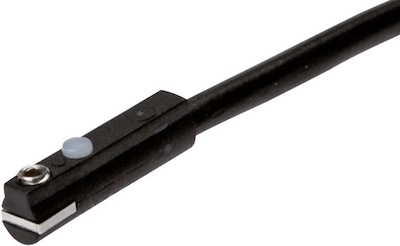
Figure 2: A position sensor for pneumatic cylinders.
Characteristics
The characteristics of ISO 15552 pneumatic cylinders comply to the following standards:
- Max pressure: 10 bar (145 psi)
- Piston bore sizes: 32 mm, 40 mm, 50 mm, 63 mm, 80 mm, 100 mm, 125 mm, 160 mm, 200 mm, 250 mm, and 320 mm
- Nominal stroke length: For the nominal stroke length, see values in ISO 4393; 5 - 500 mm. Manufacturers may offer custom stroke length; a pneumatic cylinder with a custom stroke length still adheres to standard so long as it adheres to all of the other factors in the standard.
- Movement direction: Single- and double-acting
-
Cushioning:Cushioning decelerates the load that the piston moves. ISO 15552 pneumatic cylinders have elastic cushioning rings, adjustable air cushioning, or self-adjusting cushioning.
- The adjusting screw for adjustable air cushioning must be on the same side as the pneumatic port.
- Mounting accessories: Many different types of mounting accessories work with ISO 15552 pneumatic cylinders. Read our mounting accessories guide to learn more.
To understand the precise details of an ISO 15552 pneumatic cylinder, refer to the ISO 15552 standard for data on:
- Dimensions
- Nominal stroke
- Bore sizes
- Mounting types
- Accessory types
ISO 6431 vs ISO 15552
ISO 6431 was first released in 1983. ISO 15552 replaced ISO 6431 in 1999. Both of these standards specify the design, dimensions, and performance characteristics of pneumatic cylinders used in industrial automation applications. ISO 6431 specifies pneumatic cylinders with a round barrel shape and non-repairable design. On the other hand, ISO 15552 specifies pneumatic cylinders with a rectangular prism shape and a repairable design.
FAQs
What is the ISO standard for pneumatic cylinders?
There are multiple ISO standards covering different types of pneumatic cylinders. ISO 15552 pneumatic cylinders are one of the most commonly used throughout industry.
Can custom stroke lengths be used with ISO 15552 pneumatic cylinders?
Yes, custom stroke lengths can be used with ISO 15552 pneumatic cylinders, as long as they meet the standard's other requirements, such as bore size and mounting dimensions.








